The Ngorongoro Crater is the world’s largest unbroken caldera. It is affectionately referred to as “Africa’s Garden of Eden” and described as a fishbowl of wildlife. Over 30,000 animals live in the crater, including the Big 7 of lion, leopard, rhinoceros, elephant, and hippopotamus. Ngorongoro Crater is 12 miles (19 kilometers) across and has a fairly consistent circumference. It accounts for 102 square miles (264 square kilometers) of wilderness. Hyenas, zebra, eland, wildebeest, impala, cheetah, and buffalos are among the other animals that live in the crater.
The crater’s rim rises 2,000 feet (610 meters) above the crater floor, reaching an elevation of 7,500 feet (2,286 meters) above sea level. The crater is home to the endangered black rhino, and seeing one makes a trip to Ngorongoro even more incredible.
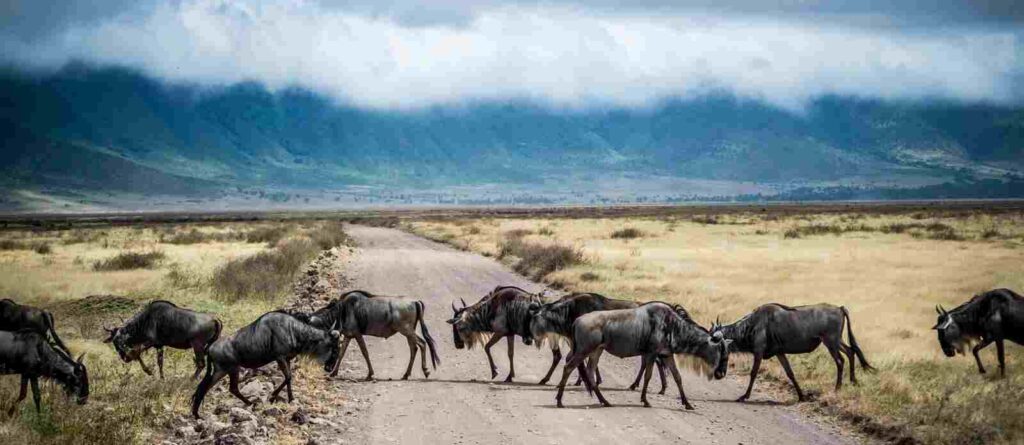
WAYS TO SEE NGORONGORO CRATER
The Ngorongoro Crater can be seen up close and personal by either a 4×4 luxury safari vehicle or a hot air balloon safari tour. Many travellers prefer a combination of the two in order to fully utilize their vantage points during their tour.
4×4 Land Cruiser
A 4×4 safari vehicle or a hot air balloon safari tour can take you up close and personal with the Ngorongoro Crater. Many tourists prefer a combination of the two in order to make the most of their vantage points during their trip.

Animals are drawn to the Crater by the green grass on its cliffs and walls. Some animals are thought to simply fall into the core zone because the area was once a migratory corridor for animals in trans Serengeti National Park during the dry season when animals crossed to Lake Manyara National Park. More wildlife, particularly birding species such as flamingos, were drawn to the crater lake as a result of its fresh alkaline water. Animals that had descended to the crater were unable to return to the surface. As a result of being trapped and unable to flee, they reproduced. Because of this, the Ngorongoro Crater is one of Africa’s most densely populated conservation areas.
Air Balloon
Ballooning over the Ngorongoro Crater is another peaceful experience. This experience allows you to appreciate the beauty and scale of the Ngorongoro Conservation Area, as well as the diversity of the species found within the core zone. Normally, the balloon will land somewhere in the conservation area, with breakfast waiting for you.

BEST TIME TO SEE NORONGORO CONSERVATION AREA
The wildlife viewing inside the Ngorongoro Crater is always spectacular. However, during the Dry season (June through October), the grass on the crater floor is short, making animal spotting easier. During the Wet Season, the scenery is lush and spectacular (from November to May).
June To October
Wildlife is easier to spot during the dry season because the grass is shorter. There has been little to no rain, and there has been a lot of sunshine. Malaria is less likely to be contracted because there are fewer mosquitos. The Ngorongoro Crater fills up quickly. The mornings and evenings become bitterly cold.
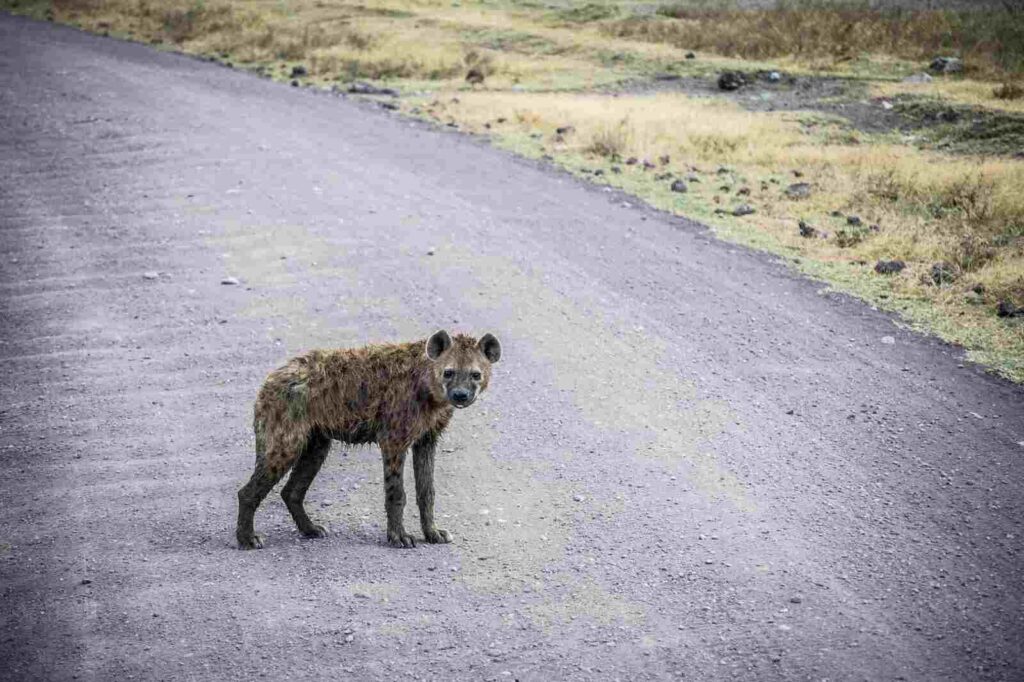
November, April And May
Even during the wet season, Ngorongoro Crater offers excellent wildlife viewing. The scenery is lush and beautiful. Birding is at an all-time high due to the presence of migratory birds. The low season is November, April, and May, when there are fewer tourists. Except for March and April, rains are mostly short afternoon storms that rarely cause problems on your trip. Bring warm clothing for the nights and early mornings because it gets cold.
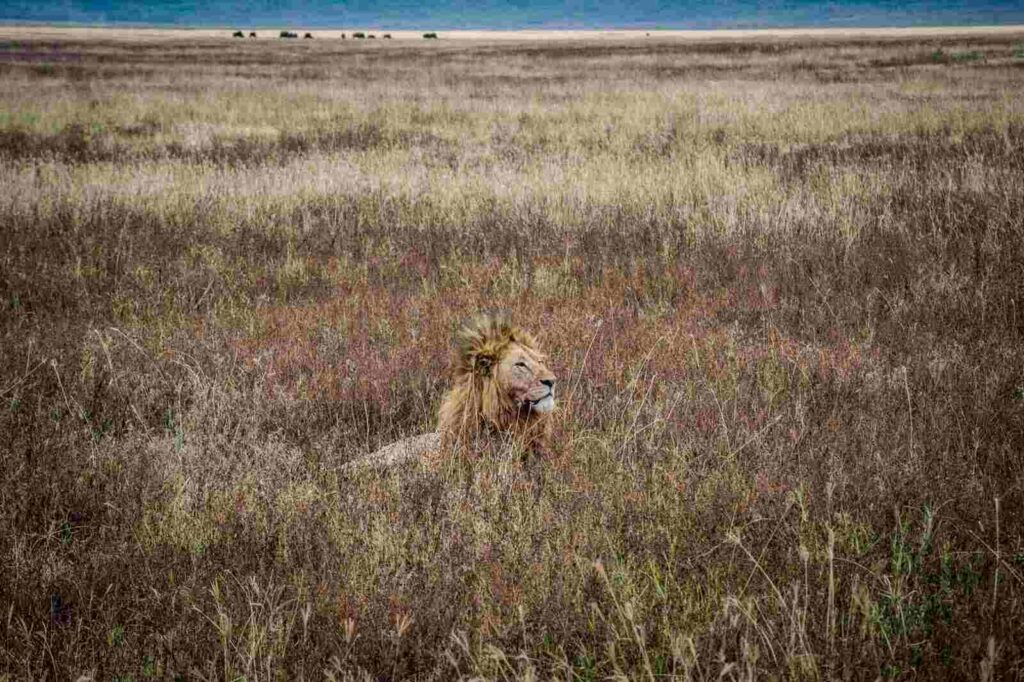
PLACES TO STAY NEAR NGORONGORO CRATER
Depending on your preferences, Ngorongoro has a wide range of accommodation options for bush tours. Lodges, eco-lodges, country cottages, tented camps, bush camps, and mobile camps reflect the various Tanzania safari vacation experiences you seek, ranging from total comfort, supreme luxury, and superlative service, with world-class decor, flair of international cuisine, and every modern amenity, to an authentic bush wilderness experience with minimal environmental impact and few amenities.
The Ngorongoro Conservation Area lodges are made up of several cottages or chalets clustered around a central complex that includes a reception area, dining room, bar, and lounge. You can opt for the premier luxury safari tier 1 option, which incorporates a surreal experience that combines Rococo decor worthy of a French chateau with personal butler service and international cuisine.

Safari Tier 2 options include cottages and a farmhouse set in beautiful gardens alive with birdsong, but they are an hour’s drive from the Ngorongoro Crater gate. Otherwise, you can settle for comfort safari Tier 3 options up on the crater, but power is limited and hot water is only available in the morning and evening. The rooms are simple and small, but bright and clean, with an en-suite bathroom and a cozy wood-burning stove.
The tented bush camps at Ngorongoro are small and intimate, with only 9 traditional and beautifully furnished tents and king-sized beds. The camps are integrated subtly on the volcanic rim among beautiful shaded acacia trees, and are ideally located for early access to the crater, well before the majority of visitors flock to the crater floor. Tented bush camps provide a high level of comfort and client-centered service, with an authentic colonial safari ambiance and yesteryear amenities, butler attention, friendly service, exemplary guides, and international culinary standards, ensuring the ultimate mid-range in canvas accommodation for your dream safari in Tanzania.
Accommodations in both the Ngorongoro Crater and the Karatu suburbs are generally larger to maximize occupancy, but some still offer meticulous attention to detail as well as access to local communities and organized activities. There are few options for smaller lodging. Mobile bush camps are set up seasonally for limited use throughout the year, with flush toilets, comfortable beds, basic lighting, open-air or in-tent showers, and delectable campfire meals – these accommodations are supremely environmentally friendly, blending gently into the wilderness, with flush toilets, comfortable beds, basic lighting, open-air or in-tent showers, and delectable campfire meals. Fused value accommodations at Tier 3 tented lodges cater to more budget-conscious guests, but they are not anywhere near rough back-packing camps.
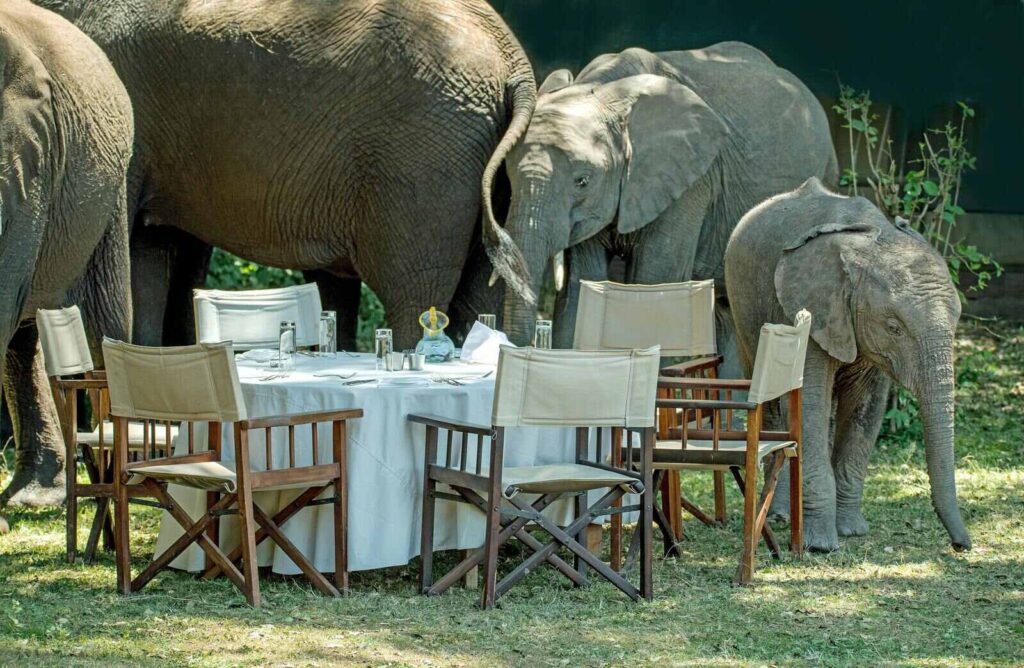
WAYS TO EXPERIENCE NGORONGORO CRATER
When you’re ready to start planning your safari vacation, there are several safari packages to choose from to help you enjoy the Ngorongoro Crater in style. The most popular wildlife safari packages for the Ngorongoro Crater are the 5 day Serengeti Migration safari tour package, the 4 day migration tour, the 6 day wildebeest migration safari package, and the 7 day Serengeti migration safari. These are typically adaptable private safaris or family safaris. Individuals on a tight budget might want to look into 7-day standard safaris in Tanzania, 6-day regular Tanzania safari tours, and 5-day safari game drives. Because these are low-cost safari tours, expect to visit several safari destinations along the northern circuit, including Tarangire National Park, the Serengeti, Ngorongoro Crater, and Lake Manyara. The parks of northern Tanzania are among the best places to visit on an African safari. Although catching the migration on a four-day safari trip is possible, it is extremely unlikely due to the safari route rarely passing through the northern plains. The same can be said for a hurried three-day safari in Tanzania.
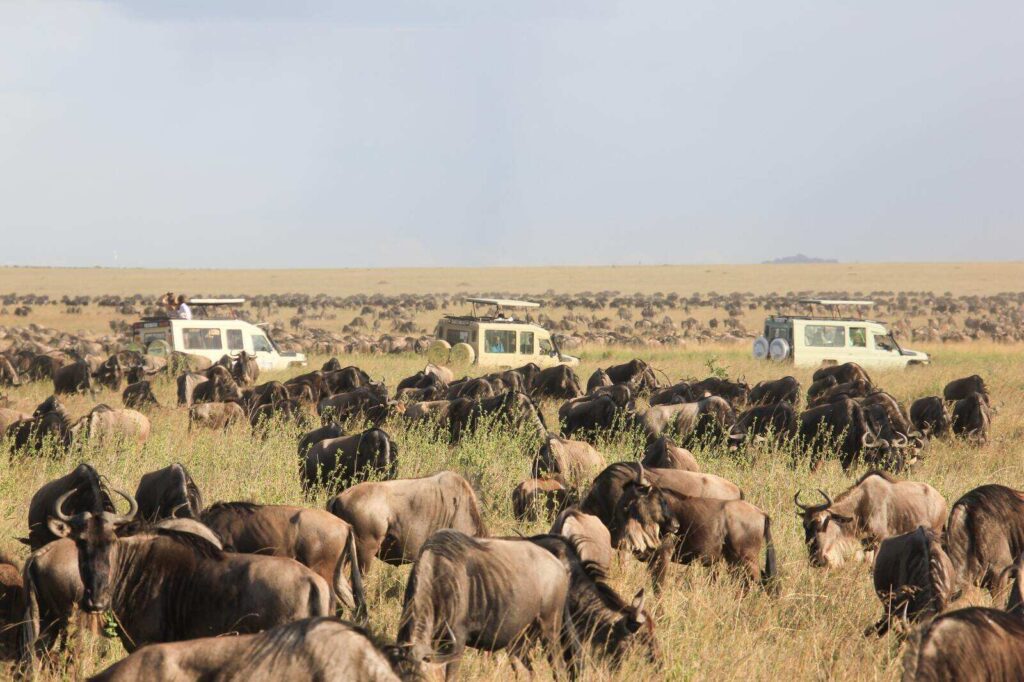
In 2-day classic safaris or day trips, short tours of the Ngorongoro Crater are included. Safari enthusiasts prefer 10-day, 14-day, and 15-day wildlife safari itineraries. These expeditions may take place in national parks in Kenya and Tanzania.
WAYS TO GET TO THE NGORONGORO CONSERVATION AREA
Arusha is the starting and ending point for the majority of Ngorongoro safaris. Fly into Kilimanjaro International Airport (JRO), which is located approximately 46 kilometers/29 miles from Arusha. Flying into Dar es Salaam’s Julius Nyerere International Airport (DAR) and then to Arusha Airport (ARK) or Kilimanjaro International Airport (KLI) is also an option (JRO).

Flights from Arusha to the park’s numerous airstrips are scheduled on a regular basis. Another option is to drive. The journey is approximately 325km/202mi long and will take approximately eight hours. It’s a bumpy ride, but it’s scenic, and you might see some wildlife.



